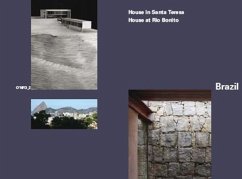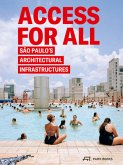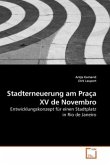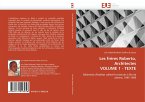Brazil gained its position in architectural history already at the beginning of the twentieth century by genuine modern buildings evoking international adoration - manifested in the well attended exhibition Brazil Builds at the Museum of Modern Art New York in 1943. The metonymy of the new architecture quickly turned into an integrative cultural force beyond the merely aesthetic context. The comprehensive spirit of optimism can still be traced today in the Federal government buildings of the young capital Brasilia , inaugurated in1960.Overshadowed by the omnipresent personality of Oscar Niemeyer, who has long been regarded as the sole international representative of the Brazil architectural scene since 1930, little is known about the virtuoso buildings continually built since those formative years of early modernism in Brazil, effortlessly keeping up with the fast-paced developments of the cities. As a result of the publicity of the second Brazilian Pritzker Prize winner Paulo Mendes da Rocha in 2006, a younger generation of architects mainly working in Sao Paulo and Rio de Janeiro draws growing international attention. They follow in the footsteps of a long list of forefathers, whose early protagonists such as Vilanova Artigas, Lucio Costa, Sergio Bernardes remained widely unknown in the US and Europe.The second O Neil Ford duograph is devoted to two residential buildings by Angelo Bucci and Carla Juaçaba. Both buildings are located in Riode Janeiro being considered as to convey like no other city the complex parallel Brazilian life styles and realities to an international audience.The house by Angelo Bucci, who studied in Sao Paulo, where he is teaching today, at the legendary school of architecture by Vilanova Artigas, FAUUSP, is located in the vital central quarter of Santa Teresa high above the lower parts of town. Not visible from the street, the building reveals itself to the visitor in meticulously staged sequences until one reaches the highest point where the 360 degree panoramic views so typical for Rio de Janeiro literally imbue the entire building, almost dissolving itself into the cosmic energy of the city.Carla Juaçaba, who studied in Rio de Janeiro living and working there ever since, is contributing to this publication a vacation house located outside of Rio de Janeiro in a remote and virgin forest area in the immediate vicinity of the river Rio Bonito; a small solitaire, a spirited rejoinder to Laugier s cabanne rustique, unfolding epical dimensions despite its actual miniature size.Each volume in the O Neil Ford Duograph series will present one building by each of two different architects from a single country. By having two buildings featured within a single book, the series editors wish to let the architects and their work speak as directly as possible through the printed page. Drawings and photographs present each building in context and detail and provide a comprehensive account. As Vol. 1 in this series was published Chile. House at Punta Pite, 2003-06 by Smiljan Radic/Crypt in the Cathedral of Santiago de Chile, 1999-2006 by Rodrigo Perez de Arce.Parallel to the O Neil Ford Duographs the Center for American Architecture and Design and the O Neil Ford Chair are launching a sister series entitled the O Neil Ford Monographs. This latter series will document the complex gestation of single buildings of central importance to architecture.
Hinweis: Dieser Artikel kann nur an eine deutsche Lieferadresse ausgeliefert werden.
Hinweis: Dieser Artikel kann nur an eine deutsche Lieferadresse ausgeliefert werden.








